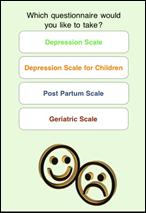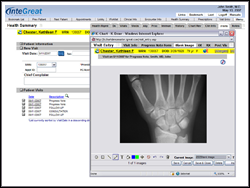Intelligent Healthcare Information Integration 7/13/09
You Have To Let It All Go, Neo
Just for fun, let’s say you have 19 billion dollars and a tremendously philanthropic heart. Let’s say you decide to devote your vast fortune to solving the healthcare crisis in America. As you also have a geeky soul, you settle upon healthcare information technology enhancement as the vehicle you deem most likely to have give you that big bang for your many, many bucks.
You look around the HIT realm and see many, many players providing many, many digital solutions, but realize that the vast majority of them are siloed, they don’t work and play well with others. There are some really wonderful systems, many of which have the potential to provide the electronic underpinning to your truly national health care project; however, very few, if any, have all of the tools with all of the interoperability you seek. Virtually none have the diversity of user interface that end users’ widely divergent personal preferences demand. (People do want their own style.)
It appears to you that no current system can provide the be-all-end-all tool that works for everyone, no system yet has the easy and highly individualized personal customization required to entice everyone into adoption with a tool that works for their unique needs and their unique eyes. Thus, you begin to ponder, “I wonder what kind of a broadly attractive system I could build from scratch for my 19 billion dollars?”
Pursuing this thought train, you muse:
- How many top notch developers could I hire? (2,000 X $150K = $300 million)
- How many designers could I employ to make user interfaces that are easy with thousands of skins so everyone can look at whatever suits their eyes? (2,000 X $150K = $300 million)
- How many educators could I deploy throughout the country to make sure “no child is left behind” – or any adult? (10,000 X $150K = $1.5 billion)
- How much of my money pile could I afford to give to individual smaller communities across the nation to help them step across the digital healthcare divide? (Micropolitan areas: 577 X $3M = $1.73 billion)
- How much could I give to schools to help educate the young so that, going forward, this digital healthcare stuff becomes second nature? (94,000 X $100K = $9.4 billion)
- How many really great support personnel could I hire and deploy to every corner of the land in an effort to insure uptime? (10,000 X $250K = $2.5 billion)
- How large a chunk would be left over for various loose nuts and bolts, including quality CEOs, COOs, CIOs, and all the little “o”s? ($3.27 billion)
2,000 developers; 2,000 designers; 10,000 support personnel; 10,000 educators; big, no huge, chunks of money to help small communities join the party and teach our children how to be digital healthcare thinkers using existing Web and cell phone technologies which already reach every knook and most every cranny? “Hmmmmmm…,” you further muse, “I bet this money could really do some good.”
“You have to let it all go, Neo…fear, doubt, and disbelief. Free your mind.” – Morpheus

Dr. Gregg Alexander is a grunt-in-the-trenches pediatrician and geek. His personal manifesto home page…er..blog…yeh, that’s it, his blog – and he – can be reached through http://madisonpediatric.com or doc@madisonpediatric.com.









The article about Pediatric Associates in CA has a nugget with a potentially outsized impact: the implication that VFC vaccines…